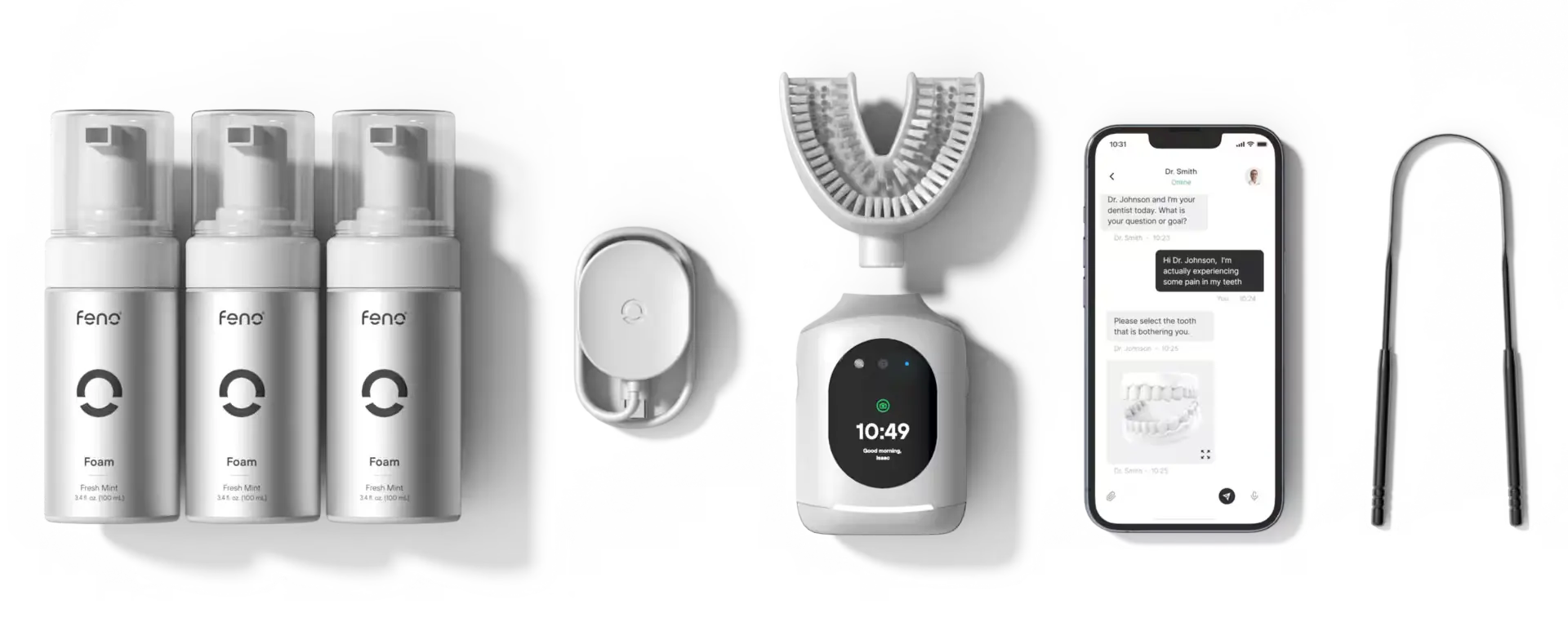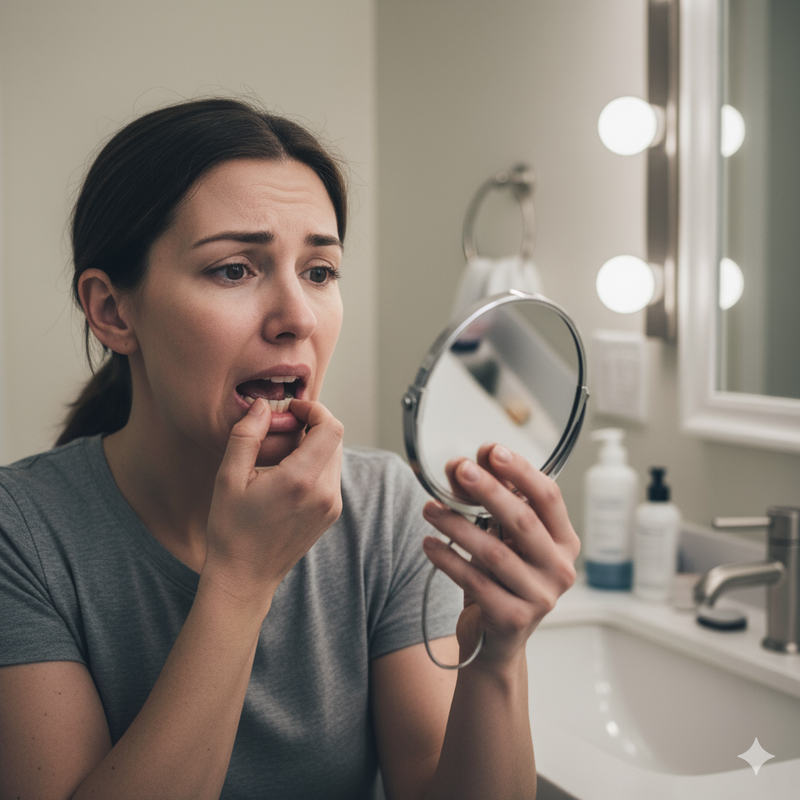
Innovations in Oral Hygiene Products and Techniques
Essential Takeaways
- Modern oral hygiene has evolved from basic tools to advanced, technology-driven products that deliver personalized care.
- Innovations like smart and U-shaped toothbrushes offer real-time feedback and comprehensive, efficient cleanin
- Advanced toothpaste, mouthwash formulations, and sustainable products address diverse oral health needs.
- The integration of AI, tele-dentistry, and wearable technologies fosters proactive, tailored dental care.
- Together, these breakthroughs empower patients to achieve superior dental health, reduce treatment times, and enhance comfort—reflecting a transformative shift in how we perceive and practice oral hygiene.
The journey of oral hygiene innovation has been remarkable, transitioning from the simple toothbrushes and basic dental care of the past to today's high-tech solutions. This evolution reflects our growing understanding of the importance of dental health and the technological advancements that have made sophisticated oral care trends possible. From the early days of chew sticks used by ancient civilizations to the introduction of the first mass-produced toothbrush, and now to the era of modern dental products, the transformation is profound. This progression signifies not only advancements in dental hygiene practices but also a shift in societal perceptions of oral health care.
The Revolution of Oral Hygiene Products
The Emergence of the U Brush
The launch of the U toothbrush represents a transformative moment in the evolution of oral hygiene, introducing a novel approach to dental care. Distinguished by their innovative U-shaped design, these products are engineered to align with the natural curvature of the teeth, facilitating a comprehensive, uniform cleaning experience that surpasses that of traditional toothbrushes. This design breakthrough ensures simultaneous cleaning of all tooth surfaces, significantly reducing the time spent brushing without compromising on thoroughness. Such advancements underscore the ongoing pursuit of efficiency and effectiveness in oral hygiene practices, promising users not only an optimized brushing routine but also an enhanced standard of dental cleanliness and overall oral health.
Smart Toothbrushes: Beyond Just Brushing
Smart toothbrushes have redefined what it means to brush your teeth, offering features that go beyond simple cleaning. Equipped with sensors, these toothbrushes can track brushing habits, provide feedback, and even suggest improvements through a connected app. This leap in oral hygiene innovation brings a new level of interactivity and personalization to daily dental care, making smart toothbrushes an indispensable tool for those looking to maintain optimum oral health.
The Functionality and Benefits of Connected Toothbrushes
Connected toothbrushes elevate oral care trends by integrating with digital technology to offer unprecedented functionality. The benefits of using a connected toothbrush include improved brushing techniques, enhanced motivation, and the ability to track progress over time. This integration of modern dental technology into everyday items like toothbrushes exemplifies the trend towards more interactive and data-driven approaches to oral hygiene, empowering users to take control of their dental health in new and exciting ways.
Innovations in Toothpaste and Mouthwash
From formulations that target specific oral health concerns like sensitivity and gum disease to those that include natural ingredients for a holistic approach, modern toothpaste and mouthwashes offer options for every need and preference. Additionally, advancements in these products, such as the introduction of nano-hydroxyapatite for remineralization and probiotics to balance the oral microbiome, reflect the broader trend of innovative dentistry and oral health.
Advanced Dental Techniques for Modern Oral Care
Precision Cleaning
The advent of advanced oral care has ushered in an era of precision cleaning, where technology plays a pivotal role in enhancing dental hygiene methods. Techniques now incorporate ultrasonic cleaners, high-powered electric toothbrushes, and water flossers, all designed to remove plaque and bacteria more efficiently than traditional methods. This technological leap not only improves the effectiveness of daily oral hygiene routines but also reduces the risk of periodontal disease and cavities. There are also specialized oral care products and techniques designed for children, individuals with braces, implants, dentures, sensitive teeth, or specific medical conditions.
Minimally Invasive Dentistry: A New Era
Minimally invasive dentistry marks a significant advancement in dental care, focusing on methods that reduce the need for extensive dental work and prioritize patients' comfort and the health of their natural teeth. This approach leverages cutting-edge technology and innovative techniques to offer a more pleasant dental experience with optimal outcomes. Below are the core principles of minimally invasive dentistry:
-
Tooth Structure Preservation: This principle is at the heart of minimally invasive dentistry. The approach seeks to maintain as much of the natural tooth structure as possible, avoiding traditional methods that require significant removal of the tooth material. By preserving the natural tooth, dentists can ensure stronger, healthier teeth in the long term.
-
Advanced Diagnostics: The use of advanced diagnostic tools, such as digital X-rays and intraoral cameras, allows for the early detection of dental issues when they are most treatable. These technologies provide detailed images of the teeth and gums, enabling dentists to identify problems with greater accuracy and less intrusion, leading to more targeted and conservative treatments.
-
Less Invasive Techniques: Techniques like air abrasion exemplify the minimally invasive approach. Air abrasion uses a fine stream of particles to gently remove decay from the tooth surface without the need for traditional drilling. This method is not only less invasive but also reduces the discomfort and anxiety many patients feel during dental procedures.
-
Patient Comfort: Minimally invasive dentistry emphasizes patient comfort. By using techniques that are less intimidating and more gentle, dentists can significantly reduce the anxiety and discomfort that often accompany dental visits.
By focusing on preserving natural tooth structure, employing advanced diagnostics, utilizing less invasive techniques, and enhancing patient comfort, this approach ensures that dental procedures are not only effective but also minimally disruptive. This evolution in dental practice underscores the importance of adopting gentle, precise, and patient-friendly methods to benefit both dental health and the patient experience.
The Impact of 3D Printing on Custom Dental Solutions
The impact of advanced dental technologies such as 3D printing, laser dentistry, and tele-dentistry on professional dental treatments and patient experiences is important. 3D printing has made a profound impact on modern dental techniques, particularly in the realm of custom dental solutions. From personalized implants and crowns to orthodontic devices tailored to the individual's anatomy, 3D printing allows for precision, speed, and customization previously unimaginable. This technology reduces waiting times for prosthetics, improves fit and comfort, and enhances aesthetic outcomes.
Laser Dentistry and Its Contributions to Pain-Free Treatments
This has emerged as a key player in advanced oral care, offering a range of pain-free treatment options. Lasers are used for various dental procedures, including cavity detection, gum reshaping, and the removal of soft tissue lesions, with minimal discomfort and bleeding. This technique's precision and reduced healing time represent a leap forward in dental hygiene methods, providing patients with more comfortable and less invasive treatment alternatives.
Modern Dental Technology and Its Impact
The Integration of AI in Personalized Dental Care Plans
Artificial Intelligence (AI) is revolutionizing modern dental technology by enabling the creation of personalized dental care plans. AI algorithms analyze data collected from smart toothbrushes and other connected toothbrush devices to provide personalized guidance on improving oral hygiene practices. This oral hygiene innovation tailors recommendations to individual needs, optimizing dental care routines for better outcomes. The integration of AI highlights a future where advanced oral care is not just about the tools we use but also about how data from these tools can be leveraged to enhance personal health.
Tele-dentistry: Remote Dental Consultations
This is a modern approach that utilizes digital communication tools to offer remote dental consultations, breaking down geographical and accessibility barriers. It allows patients to receive professional advice, preliminary diagnoses, and follow-up care without the need to visit a dental office in person. Especially valuable in rural or underserved areas, tele-dentistry represents an oral health advancement by expanding access to dental care services, making dental health management more inclusive and convenient for all.
Wearable Technologies for Oral Health Monitoring
These devices, which can range from smart dental retainers to sensor-embedded braces, collect health data directly from the user’s mouth over time. This ongoing monitoring can help detect early signs of issues such as bruxism (teeth grinding), jaw clenching, and more, offering insights that lead to preventative care and treatment.
Trends Shaping the Future of Oral Hygiene
The Shift Towards Sustainable Dental Products
The move towards sustainability within the dental sector mirrors a broader societal shift towards eco-conscious consumer choices, directly impacting how dental products are developed, packaged, and marketed. This trend not only reflects a growing public awareness of environmental issues but also a commitment from both consumers and manufacturers to reduce ecological footprints. The key features of this shift include:
-
Biodegradable Toothbrushes: These toothbrushes are crafted from materials such as bamboo or other compostable materials, offering a natural alternative to the plastic versions that dominate the market. Biodegradable toothbrushes decompose naturally, significantly reducing landfill waste and providing an eco-friendly option for oral hygiene.
-
Toothpaste Tablets: A novel approach to reducing plastic waste, toothpaste tablets eliminate the need for traditional plastic tubes. These tablets are packaged in recyclable or compostable materials and are activated by water, offering a convenient, mess-free, and sustainable alternative to conventional toothpaste.
-
Natural Mouthwashes: Formulated from ingredients free of harmful chemicals, natural mouthwashes offer a safer, environmentally friendly option for oral health care. By avoiding synthetic additives, these mouthwashes minimize the risk to both human health and the environment, aligning with the principles of sustainable living.
-
Eco-Friendly Packaging: The shift towards sustainability is also evident in packaging choices. Many dental products now come in packaging made from recycled materials or materials that can be composted after use. This approach significantly reduces the environmental impact of packaging waste and represents a commitment to circular economic principles.
-
Sustainable Manufacturing: Beyond the products themselves, sustainable manufacturing practices play a crucial role in this industry shift. These practices include reducing water and energy consumption, minimizing waste, and sourcing materials responsibly. Such measures not only reduce the carbon footprint of production but also align with a broader commitment to environmental stewardship.
This trend towards sustainable dental products underscores a significant evolution in the industry, driven by consumer demand for products that are effective in maintaining oral health while being mindful of their environmental impact.
Predictive Analytics in Preventing Dental Diseases
Predictive analytics is emerging as a powerful tool in oral health advancements, offering the potential to prevent dental diseases before they start. By analyzing data from connected toothbrushes and other digital health tools, dental professionals can identify patterns and risk factors associated with oral health issues.
Consumer Behavior and Oral Hygiene Innovations
How User Feedback Drives Product Development
User feedback has become an invaluable asset for product development. Manufacturers of modern dental products actively seek out consumer insights to refine and enhance their offerings. This direct line of communication ensures that new hygiene products not only meet the functional needs of users but also address their preferences and concerns. By incorporating feedback into the design process, companies can create more effective, user-friendly products that resonate with consumers.
The Role of Educational Tools, Mobile Apps, and Awareness Campaigns
In today’s rapidly evolving oral care landscape, educational tools, mobile apps, user feedback mechanisms, and awareness campaigns are increasingly pivotal in promoting oral health and fostering effective hygiene habits among consumers. These innovations bridge the gap between clinical dental advice and everyday self-care, empowering individuals to take control of their oral health through knowledge, motivation, and personalized guidance.
Educational tools help explain oral hygiene practices and make complex dental concepts accessible to a broader audience. Many dental professionals and organizations now utilize engaging videos, infographics, and gamified learning modules to teach proper brushing and flossing techniques, explain the importance of routine care, and highlight the risks associated with neglecting oral hygiene. Such resources are especially valuable for children and young adults, who benefit from age-appropriate content that transforms oral care into a fun and rewarding activity.
Mobile apps have emerged as powerful tools for reinforcing daily oral hygiene routines and providing real-time feedback. Many smart toothbrushes now sync with companion apps to track brushing duration, pressure, and coverage, offering personalized tips and reminders to improve technique. These apps often include visual guides, progress charts, and even reward systems to keep users engaged and motivated. For parents, child-focused dental apps can help monitor their children’s brushing habits and encourage consistency through interactive games and positive reinforcement. The integration of mobile technology not only increases adherence to recommended practices but also fosters a sense of accountability and achievement.
User feedback is another critical driver of innovation in oral hygiene products and educational strategies. Manufacturers and dental professionals increasingly solicit consumer input through surveys, app ratings, and online communities to understand user preferences, challenges, and unmet needs. This feedback loop enables the continuous refinement of products, educational content, and engagement tactics, ensuring that they remain relevant and effective. Incorporating user insights has led to the development of more user-friendly and accessible dental solutions that resonate with a diverse audience.
Awareness campaigns play a vital role in elevating the importance of oral health at the community and societal level. These campaigns leverage traditional media, social platforms, and grassroots outreach to disseminate key messages about preventive care, the links between oral and overall health, and the availability of innovative hygiene solutions.
Advancements in Innovative Tooth Cleaning Tools and Accessories
Recent years have seen significant advancements in tooth cleaning tools and accessories, transforming daily oral hygiene routines. Modern electric toothbrushes now feature multiple brushing modes, pressure sensors, and timers to ensure thorough yet gentle cleaning. Water flossers use pulsating streams to remove debris from hard-to-reach areas, offering an effective alternative to traditional flossing. Ultrasonic cleaners leverage high-frequency vibrations to break down plaque and tartar without harming enamel. Tongue scrapers and dental mirrors enhance self-care by enabling users to target bacteria and monitor oral health closely. At-home teeth whitening kits now incorporate safer, more effective ingredients, making brighter smiles accessible and convenient.
The journey ahead is filled with opportunities to integrate technology into dental care further, making preventive measures more precise and treatments more comfortable and less invasive. As we move forward, the focus will undoubtedly remain on developing solutions that are not only technologically advanced but also sustainable and equitable. By continuing to innovate and adapt, the dental industry can ensure that the future of oral health management is bright, inclusive, and geared towards promoting the well-being of individuals worldwide. Experience a new era of oral care and elevate your daily routine by exploring Feno’s innovative dental solutions today.






